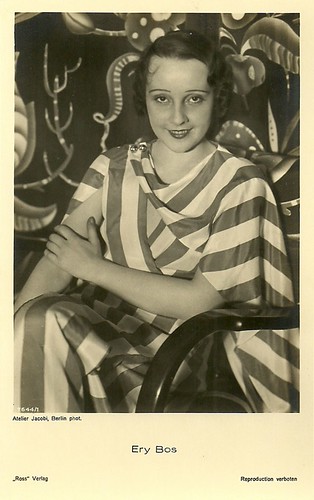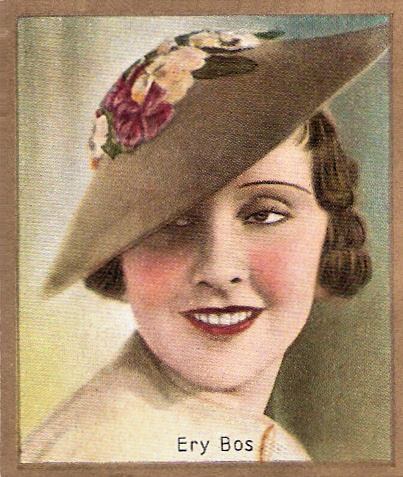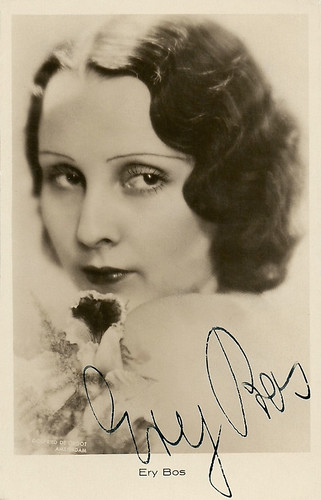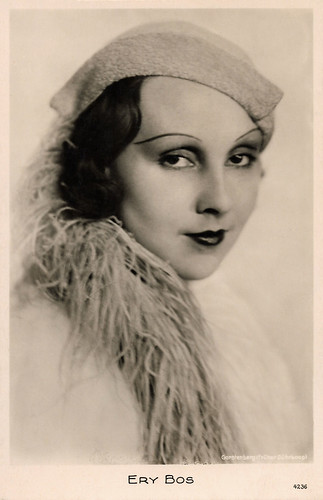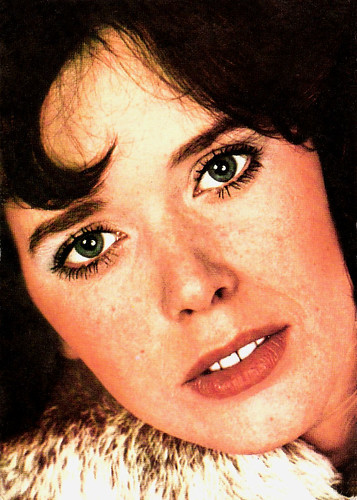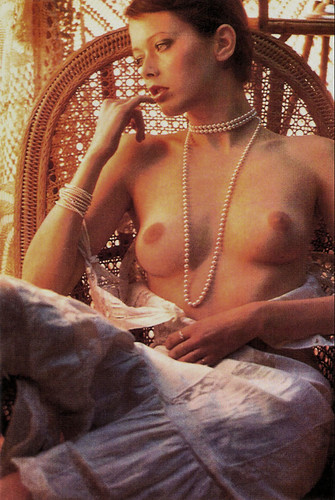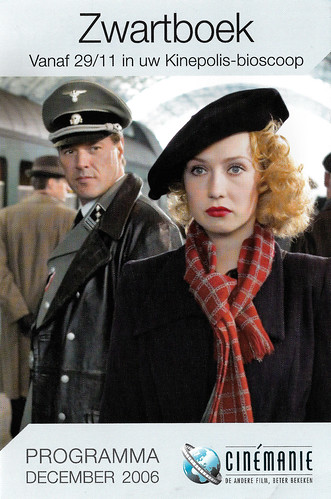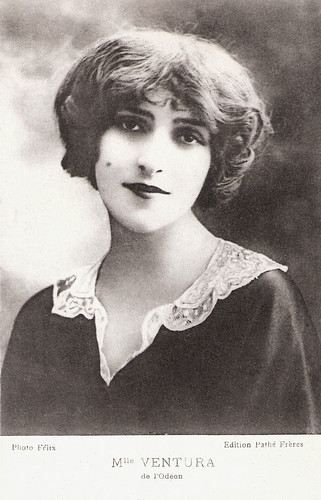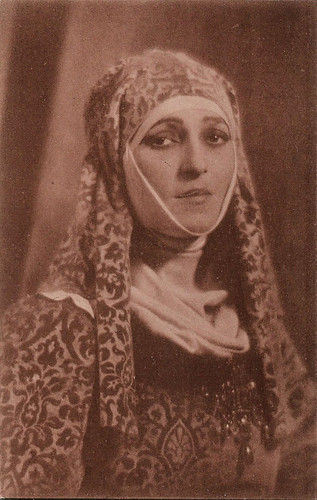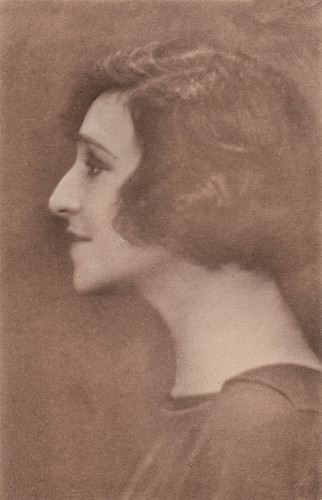Rock Hudson (1925–1985) was a popular Hollywood star in the 1950s and 1960s. The tall and handsome actor was teamed up in romantic comedies with Doris Day, but he also starred in dramatic roles in Magnificent Obsession (1954) and Giant (1956), for which he received an Oscar nomination for Best Actor. In later years, he starred on TV in the mystery series McMillan & Wife (1971-1977) and the soap opera Dynasty (1984-1985). Hudson, secretly gay, became in 1985 the first major celebrity who died from an AIDS-related illness.

German postcard by Krüger, no. 902/131. Photo: Terb Agency / UFA.
Rock Hudson in
Come September (Robert Mulligan, 1961).

German postcard by ISV, no. A 74. Photo: 20th Century Fox.
Rock Hudson in
A Farewell to Arms (Charles Vidor, 1957).

Spanish postcard by Postalcolor, Hospitalet (Barcelona), no. 65. Photo: Warner Bros.

German postcard by UFA, Berlin-Tempelhof, no. CK 416. Photo: Terb Agency / UFA.
Rock Hudson in
The Last Sunset (Robert Aldrich, 1961).

Italian postcard by Rotalfoto, Milano, no. 199.
You big dumb bastard, don't stay there like a tree!
Rock Hudson was born
Roy Harold Scherer, Jr. in 1925 in Winnetka, Illinois at Sarah A. Jarman Memorial Hospital. He was the only child of
Katherine (née Wood), a homemaker and later telephone operator, and
Roy Harold Scherer Sr., an auto mechanic. During the Great Depression, Hudson's father lost his job and abandoned the family. Hudson's parents divorced when he was four years old. Several years later, in 1932, his mother married
Wallace Fitzgerald, a former Marine Corps officer whom he despised. Fitzgerald adopted his stepson without his consent, whose legal name then became
Roy Fitzgerald. That marriage eventually ended in a bitter divorce and produced no children.
Hudson attended New Trier High School in Winnetka. He sang in the school glee club and later was remembered as a shy boy who delivered newspapers, ran errands, and worked as a golf caddy. At some point during his teenage years, he worked as an usher in a cinema and developed an interest in acting. He tried out for several school plays but failed to win any roles because he could not remember his lines, a problem that continued to occur throughout his early acting career. He graduated from high school in 1943, and the following year enlisted in the United States Navy, during World War II. After training at the Great Lakes Naval Training Station, he departed San Francisco aboard the troop transport SS Lew Wallace, with orders to report to Aviation Repair and Overhaul Unit 2, then located in Samar, Philippines, as an aircraft mechanic. In 1946, he returned to San Francisco aboard an aircraft carrier and was discharged the same year.
Hudson then moved to Los Angeles to live with his biological father, who had remarried, and to pursue an acting career. Initially, he worked odd jobs, including as a truck driver. He applied to the University of Southern California's dramatics program but was rejected due to poor grades. After he sent talent scout
Henry Willson a picture of himself in 1947, Willson took him on as a client, let him cap his teeth and changed the young actor's name to
Rock Hudson, combining the Rock of Gibraltar and the Hudson River. Later in his life, Hudson admitted that he hated the name.
Rock Hudson made his acting debut at Warner Bros. with an uncredited part as a pilot in the World War II aviation war film
Fighter Squadron (Raoul Walsh, 1948), starring
Edmond O'Brien and
Robert Stack. According to
Wikipedia, Hudson was under personal contract to director
Raoul Walsh, who rode him unmercifully, saying "You big dumb bastard, don’t just get in the centre of the camera and stay there like a tree, move!" It took 38 takes to get a good version of Hudson's one line, "You’ve got to get a bigger blackboard." Hudson was signed to a long-term contract by Universal Studios. There he was further coached in acting, singing, dancing, fencing, and horseback riding. He began to be featured in film magazines where, being photogenic, he was promoted. His first film at Universal was the Film Noir
Undertow (William Castle, 1949), starring
Scott Brady. It gave him his first screen credit.
Several small parts followed. He played an American Indian in the Western
Winchester '73 (Anthony Mann, 1950), starring
James Stewart and
Shelley Winters, an Arab in the action-adventure
The Desert Hawk (Fred de Cordova, 1950) with
Yvonne De Carlo, and supported the
Nelson family in the comedy
Here Come the Nelsons (Fred de Cordova, 1951). Hudson was billed third in the Film Noir
The Fat Man (William Castle, 1951), but back down the cast list for the romantic war drama
Bright Victory (Mark Robson, 1951). Reportedly, he had a good part as a boxer in
Iron Man (Joseph Pevney, 1951), starring
Jeff Chandler, and as a gambler in the great Western
Bend of the River (Anthony Mann, 1952), starring
James Stewart.

British postcard in the Picturegoer Series, London, no. D 113. Photo: Universal International.

British postcard in the Picturegoer Series, London, no. D 309. Photo: R.K.O.
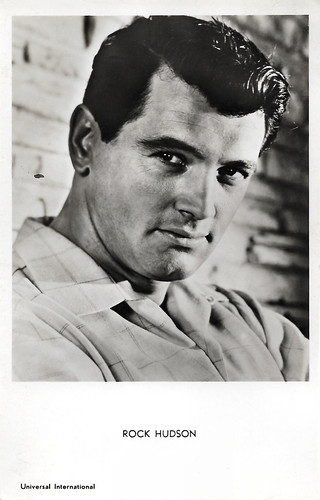
Belgian postcard, no. 27. Photo: Universal International.

Belgian postcard, no. 28. Photo: Universal International.

Dutch postcard by Uitg. Int. Filmpers (I.F.P.), Amsterdam, no. 1174.

Spanish postcard, no. 598.
Rock Hudson and
Yvonne De Carlo in
Scarlet Angel (Sidney Salkow, 1952).
Soaring to being the most popular actor in American cinemas in 1957
Rock Hudson was promoted to leading man for the adventure film
Scarlet Angel (Sidney Salkow, 1952), opposite
Yvonne De Carlo, who had starred in his earlier films
The Desert Hawk (Fred de Cordova, 1950) and
Tomahawk (George Sherman, 1951). He then co-starred with
Piper Laurie in the comedy
Has Anybody Seen My Gal? (1952), directed by
Douglas Sirk. In the Western
Horizons West (Budd Boetticher, 1952), Hudson supported
Robert Ryan, but he was the star again for another pair of Westerns,
The Lawless Breed (Raoul Walsh, 1953) and
Seminole (Budd Boetticher, 1953). In 1953 he also appeared in a Camel commercial which showed him on the set of
Seminole.
He and
Yvonne De Carlo were borrowed by RKO for
Sea Devils (Raoul Walsh, 1953), an adventure set during the Napoleonic Wars. Back at Universal, he played Harun al-Rashid in the 'Eastern'
The Golden Blade (Nathan Juran, 1953). There was the 3-D Technicolor Western
Gun Fury (Raoul Walsh, 1953), with
Donna Reed, and the adventure film
Back to God's Country (Joseph Pevney, 1953) with
Steve Cochran. Hudson had the title role in
Taza, Son of Cochise (Douglas Sirk, 1954), produced by
Ross Hunter.
Hudson was by now firmly established as a leading man in B adventure films. What turned him into a star was
Magnificent Obsession (Douglas Sirk, 1954), co-starring
Jane Wyman and produced by
Ross Hunter. The film received positive reviews, with
Modern Screen Magazine citing Hudson as the most popular actor of the year.
Magnificent Obsession made over $5 million at the box office. For millions of female filmgoers, Hudson with his towering, sculpted frame, his deep, sensuous voice and thick black hair, was the ideal leading man. Hudson went back to adventure films with
Bengal Brigade (Laslo Benedek, 1954), set during the Indian Mutiny, and
Captain Lightfoot (Douglas Sirk, 1955), produced by Hunter. In 1954, exhibitors voted Hudson the 17th most popular star in the country. Hunter used him again in two melodramas,
One Desire (Jerry Hopper, 1955) with
Anne Baxter, and
All That Heaven Allows (Douglas Sirk, 1955), which reunited him with
Jane Wyman.
Never Say Goodbye (Jerry Hopper, 1956) with
Cornell Borchers, loosely based on the play 'Come Prima Meglio Di Prima' by
Luigi Pirandello was more drama.
While his career developed, Hudson and his agent
Henry Willson kept the actor's personal life out of the headlines. In 1955,
Confidential magazine threatened to publish an exposé about Hudson's secret homosexuality. Willson stalled this by disclosing information about two of his other clients. Willson provided information about
Rory Calhoun's years in prison and the arrest of
Tab Hunter at a gay party in 1950. Soon after the
Confidential incident, Hudson married Willson's secretary
Phyllis Gates. Gates filed for divorce after three years in April 1958, citing mental cruelty. Hudson did not contest the divorce and Gates received alimony of $250 a week for 10 years. Gates never remarried. His popularity soared with
George Stevens' Western drama
Giant (1956). The film is an epic portrayal of a powerful Texas ranching family challenged by changing times and the coming of big oil. Stevens gave Hudson a choice between
Elizabeth Taylor and
Grace Kelly to play his leading lady, Leslie. Hudson chose Taylor.
Bosley Crowther of
the New York Times wrote that "
George Stevens takes three hours and seventeen minutes to put his story across. That's a heap of time to go on about Texas, but Mr. Stevens has made a heap of film. (...)
Giant, for all its complexity, is a strong contender for the year's top-film award." Hudson and his co-star
James Dean were both nominated for Oscars in the Best Actor category.
Another hit was the melodrama
Written on the Wind (Douglas Sirk, 1957), co-starring
Lauren Bacall,
Robert Stack and
Dorothy Malone, and produced by
Albert Zugsmith. Sirk also directed Hudson in the war film
Battle Hymn (Douglas Sirk, 1957), produced by
Ross Hunter. Hudson played
Colonel Dean E. Hess, a real-life United States Air Force fighter pilot in the Korean War. These films propelled Hudson to be voted the most popular actor in American cinemas in 1957. Hudson was borrowed by MGM to appear in
Richard Brooks'
Something of Value (1957), a box office disappointment. So too was his next film, a remake of
A Farewell to Arms (Charles Vidor, 1957).
A Farewell to Arms received negative reviews, failed at the box office and became the last production by
David O. Selznick. Hudson was reunited with the producer, director and two stars of
Written on the Wind in
The Tarnished Angels (Douglas Sirk, 1958), at Universal. He then made the adventure film
Twilight for the Gods (Joseph Pevney, 1958) and the melodrama
This Earth Is Mine (Henry King, 1959) with
Jean Simmons.
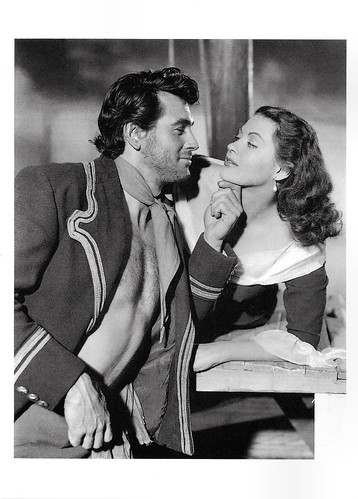
Swiss-German-British postcard by News Productions, Baulmes / Filmwelt Berlin, Bakede / News Productions, Stroud, no. 56493.
Rock Hudson and
Yvonne De Carlo in
Sea Devils (Raoul Walsh, 1952), produced by Coronado (RKO).
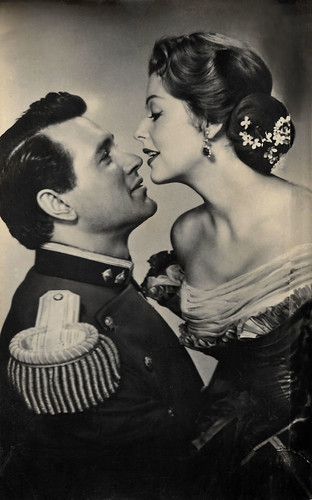
Spanish postcard, sent by mail in 1956.
Rock Hudson and
Arlene Dahl in
Bengal Brigade (Laslo Benedek, 1954).

Spanish card, no. 5164. Photo: Arch. Bermejo.

German postcard by Kolibri Verlag, Minden/Westf., no. 105. Photo: Metro-Goldwyn-Mayer. Publicity still for
Something of Value (Richard Brooks, 1957).

German postcard by Kolibri-Verlag, Minden/Westf., no. 1332.

German postcard by Kolibri-Verlag, Minden/Westf., no. 1631. Photo: Columbia.
Donna Reed and
Rock Hudson in
Gun Fury (Raoul Walsh, 1953).
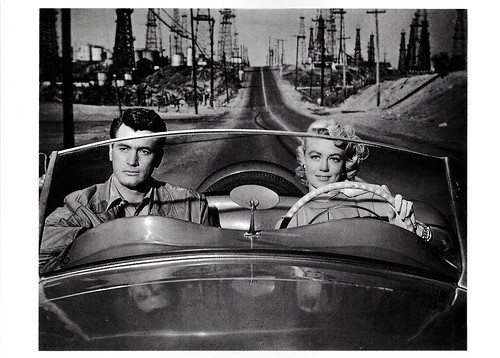
Swiss-German-British postcard by News Productions, Baulmes / Filmwelt Berlin, Bakede / News Productions, Stroud, no. 56498. Photo: Collection Cinémathèque Suisse, Lausanne.
Rock Hudson and
Dorothy Malone in
Written on the Wind (Douglas Sirk, 1956), produced by Universal.
One of the best-dressed male stars in Hollywood
Ross Hunter teamed
Rock Hudson with
Doris Day in the bedroom comedy,
Pillow Talk (Michael Gordon, 1959), which was a massive hit. Hudson was voted the most popular star in the country for 1959 and would be the second most popular for the next three years. Less popular was a Western,
The Last Sunset (Robert Aldrich, 1961), co-starring
Kirk Douglas. Hudson then made two hugely popular comedies:
Come September (Robert Mulligan, 1961) with
Gina Lollobrigida, and
Lover Come Back (Delbert Mann, 1961) again with
Doris Day. He made two dramas:
The Spiral Road (Robert Mulligan, 1962), a medical adventure story, and
A Gathering of Eagles (Delbert Mann, 1963), a military story. Hudson was still voted the third most popular star in 1963. He went back to comedy for
Man's Favorite Sport? (Howard Hawks, 1964), and more popularly,
Send Me No Flowers (Norman Jewison, 1964), his third and final film with
Doris Day. Along with
Cary Grant, Hudson was regarded as one of the best-dressed male stars in Hollywood and made the 'Top 10 Stars of the Year' list a record-setting eight times from 1957–1964.
His next film,
Strange Bedfellows (Melvin Frank, 1965), with
Gina Lollobrigida, was a box office disappointment. So too was
A Very Special Favor (Michael Gordon, 1965) with
Leslie Caron, despite having the same writer and director as
Pillow Talk. That year he was voted the 11th most popular star in the country, and he would never beat that rank again. Hudson tried a thriller,
Blindfold (Philip Dunne, 1966). He worked outside his usual range on the Science-Fiction thriller
Seconds (1966), directed by
John Frankenheimer. The film flopped but it later gained cult status, and Hudson's performance is often regarded as one of his best. He also tried his hand in the action genre with the World War Two film
Tobruk (Arthur Hiller, 1967).
After the Italian comedy
Ruba al prossimo tuo/A Fine Pair (Francesco Maselli, 1968) with
Claudia Cardinale he starred in the action thriller
Ice Station Zebra (John Sturges, 1968) at MGM, a role which he had actively sought and remained his personal favourite. The Cold War era suspense and espionage film was a hit but struggled to recoup its escalating production costs. Rock Hudson dabbled in Westerns, appearing opposite
John Wayne in
The Undefeated (Andrew V. McLaglen, 1969). He grew a moustache and sideburns for his role in
The Undefeated. Afterwards, he decided to retain that look throughout the 1970s.
He co-starred opposite
Julie Andrews in the musical,
Darling Lili (Blake Edwards, 1970). Edwards suffered continual interference from Paramount executives while making
Darling Lili, and it was eventually edited by the studio largely without his input. Edwards later claimed
Darling Lili was budgeted at $11.5 million but ended up costing $16 million. He said half the cost was due to second unit filming in Ireland and he had pleaded with Paramount not to shoot in Europe due to the weather, but the studio insisted. The film was reasonably popular but it became notorious for its huge costs. During the 1970s and 1980s, Rock Hudson starred in several TV movies and series. His most successful television series was
McMillan & Wife opposite
Susan Saint James, which ran from 1971 to 1977. Hudson played police commissioner Stewart 'Mac' McMillan, with Saint James as his wife Sally, and their on-screen chemistry helped to make the show a hit.
During the series' run, Hudson appeared in
Showdown (George Seaton, 1973), a Western with
Dean Martin, and the Horror-Science Fiction film
Embryo (Ralph Nelson, 1976). Hudson took a risk and surprised many by making a successful foray into live theatre late in his career, the most acclaimed of his efforts being 'I Do! I Do!' in 1974. In 1977 he toured 13 cities as King Arthur in the musical 'Camelot'. After
McMillan & Wife ended, Hudson made a disaster film for New World Pictures,
Avalanche (Corey Allen, 1978) with
Robert Forster and
Mia Farrow, and two miniseries,
Wheels (Jerry London, 1978) based on the novel by
Arthur Hailey, and
The Martian Chronicles (Michael Anderson, 1980), based on
Ray Bradbury's novel. He was also one of several faded stars in the enjoyable British mystery film
The Mirror Crack'd (1980), based on
Agatha Christie's Miss Marple novel 'The Mirror Crack'd from Side to Side' (1962).

Italian postcard by Rotalfoto, no. 38. Photo: Universal International.

French-German postcard by Editions P.I., Paris / UFA, Berlin-Tempelhof, no. FK 3997. Photo: Universal.

French postcard by Editions du Globe, no. 596.

German postcard by Kolibri-Verlag, Minden/Westf., no. 1882. Photo: Universal.
Rock Hudson in
The Spiral Road (Robert Mulligan, 1962).

German postcard by Kolibri-Verlag, Minden/Westf., no. 2170.

German postcard by Kolibri Verlag, Minden/Westf., no. 2323. Photo: Universal International.
Giving AIDS a face
In the early 1980s, following years of heavy drinking and smoking,
Rock Hudson began having health problems which resulted in a heart attack in November 1981. Emergency quintuple heart bypass surgery sidelined Hudson and his new TV show
The Devlin Connection for a year, and the show was cancelled in December 1982 soon after it had first aired. Hudson recovered from the heart surgery but continued to smoke. He nevertheless continued to work with appearances in several TV movies such as
World War III (David Greene, Boris Sagal, 1982). He was in ill health while filming the action-drama film
The Ambassador (J. Lee Thompson, 1984 ) in Israel during the winter months from late 1983 to early 1984. He reportedly did not get along with his co-star
Robert Mitchum, who had a serious drinking problem and often clashed off camera with Hudson and other cast and crew members.
From December 1984 to April 1985, Hudson appeared in a recurring role on the ABC prime-time soap opera
Dynasty as Daniel Reece, a wealthy horse breeder and a potential love interest for Krystle Carrington (
Linda Evans), as well as the biological father of the character Sammy Jo Carrington (
Heather Locklear). While Hudson had long been known to have difficulty memorising lines, which resulted in his use of cue cards, it was his speech itself that began to visibly deteriorate on
Dynasty. He was originally slated to appear for the duration of the show's second half of its fifth season; however, because of his progressing ill health, his character was abruptly written out of the show and died off-screen. Unknown to the public, Hudson was diagnosed with HIV in June 1984, just three years after the emergence of the first cluster of symptomatic patients in the U.S., and only one year after the initial identification by scientists of the HIV virus that causes AIDS. Over the next several months, Hudson kept his illness a secret and continued to work while, at the same time, travelling to France and other countries seeking a cure – or at least treatment to slow the progress of the disease.
On 16 July 1985, Hudson joined his old friend
Doris Day for a Hollywood press conference announcing the launch of her new TV cable show
Doris Day's Best Friends in which Hudson was videotaped visiting Day's ranch in Carmel, California, a few days earlier. He appeared gaunt and his speech was nearly incoherent; during the segment, Hudson did very little speaking, with most of it consisting of Day and Hudson walking around as Day's recording of 'My Buddy' played in the background, with Hudson noting he had quickly tired out. His appearance was enough of a shock that the reunion was broadcast repeatedly over national news shows that night and for days to come. Media outlets speculated on Hudson's health. Two days later, Hudson travelled to Paris, France, for another round of treatment. After Hudson collapsed in his room at the Ritz Hotel in Paris on 21 July, his publicist,
Dale Olson, released a statement claiming that Hudson had inoperable liver cancer. Olson denied reports that Hudson had AIDS, but, four days later, Hudson's French publicist
Yanou Collart confirmed that Hudson did in fact have AIDS. He was among the first mainstream celebrities to have been diagnosed with the disease.
In October 1985, Rock Hudson died in his sleep from AIDS-related complications at his home in Beverly Hills at age 59, less than seven weeks before what would have been his 60th birthday. Hudson requested that no funeral be held. His body was cremated hours after his death and his ashes were scattered in the channel between Wilmington and Santa Catalina Island. The disclosure of Hudson's AIDS diagnosis provoked widespread public discussion of his homosexual identity. In
Logical Family: A Memoir, gay author
Armistead Maupin, who was a friend of Hudson's, writes he was the first person to confirm to the press that Hudson was gay in 1985, effectively outing him. Maupin explains that he said to
Randy Shilts of the
San Francisco Chronicle that he was annoyed that producer
Ross Hunter, who was gay himself, denied it.
In August 1985
People published a story that discussed his disease in the context of his sexuality. The largely sympathetic article featured comments from famous show business colleagues such as
Angie Dickinson,
Robert Stack, and
Mamie Van Doren, who claimed they knew about Hudson's homosexuality and expressed their support for him. At that time,
People had a circulation of more than 2.8 million, and, as a result of this and other stories, Hudson's homosexuality became fully public. Hudson's revelation had an immediate impact on the visibility of AIDS, and on the funding of medical research related to the disease.
Rock Hudson had given AIDS a face. After his death, his long-time lover
Marc Christian successfully sued his estate, again calling attention to the homosexuality Rock had hidden from most throughout his career.

Israelian postcard by Editions de Luxe, no. 116.

Spanish postcard by Postal Oscarcolor, no. 424. Photo:
Gina Lollobrigida and
Rock Hudson in
Come September (Robert Mulligan, 1961).

German postcard by Krüger, no. 902/129. Photo: Terb Agency / UFA.
Gina Lollobrigida and
Rock Hudson in
Come September (Robert Mulligan, 1961).
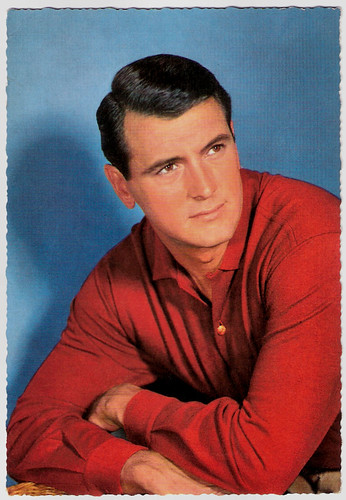
West-German postcard by Krüger, no. 902/260.

South-African postcard by East-West Publishers, Cape Town, no. 272.
Sources:
Ed Stephan (IMDb),
Wikipedia and
IMDb.
This post was last updated on 29 October 2024.

